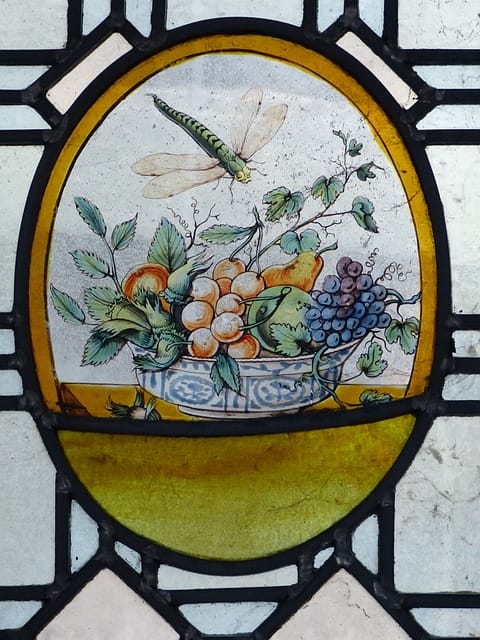Fighting gardening diseases: Cherry fruit flies
Cherry fruit flies are a common problem for gardeners, especially those who grow cherry trees

In this article:
- Introduction: Understanding Cherry Fruit Flies
- Identification and Life Cycle of Cherry Fruit Flies
- Signs and Symptoms of Cherry Fruit Fly Infestation
- Prevention Strategies: Regular Maintenance and Monitoring
- Cultural Methods: Sanitation and Natural Predators
- Chemical Controls: Insecticides and Traps
- Biological Controls: Parasitoid Wasps and Nematodes
- Integrated Pest Management (IPM) for Cherry Fruit Flies
- Managing Cherry Fruit Flies in Organic Gardens
- Importance of Timely Action and Follow-up Measures
- Additional Resources and Recommendations for Further Assistance
- Conclusion: Safeguarding Your Cherry Trees from Fruit Flies
Introduction: Understanding Cherry Fruit Flies
Cherry fruit flies are a common problem for gardeners, especially those who grow cherry trees. These pests not only cause damage to the fruit, but they can also lay eggs inside, leading to the development of maggots. In this article, we will explore different strategies to effectively combat cherry fruit flies and keep your trees healthy and fruitful.
Identification and Life Cycle of Cherry Fruit Flies
To successfully fight cherry fruit flies, it is essential to first understand their identification and life cycle. Cherry fruit flies are small insects, about 5-7 mm in length, with a yellowish-brown body. They have distinctive black bands on their wings, and their larvae are white and legless maggots. Understanding their life cycle, which includes egg, larva, pupa, and adult stages, will help you target them at vulnerable stages and prevent further infestation.
Signs and Symptoms of Cherry Fruit Fly Infestation
Recognizing the signs and symptoms of cherry fruit fly infestation is crucial for early intervention. Common symptoms include puncture marks on the surface of the fruit, browning or rotting areas, and the presence of small, white larvae inside the fruit. Additionally, early fruit drop might indicate an infestation. Regular monitoring of your trees can help you detect these signs and take appropriate action promptly.
Prevention Strategies: Regular Maintenance and Monitoring
Prevention is always better than cure. Regular maintenance practices like pruning, mulching, and proper irrigation can help keep your cherry trees healthy and more resistant to pests. Setting up monitoring traps can also aid in early detection and allow you to take preventive measures before the infestation becomes severe.
Cultural Methods: Sanitation and Natural Predators
Sanitation plays a crucial role in preventing cherry fruit fly infestation. Removing fallen fruits, pruning infected branches, and maintaining clean surroundings minimizes potential breeding sites. In addition, encouraging natural predators such as birds and wasps can help control cherry fruit flies naturally.
Chemical Controls: Insecticides and Traps
When cultural methods alone are not sufficient, chemical controls can be considered. Insecticides specifically designed for cherry fruit flies can be an effective option if used correctly. Additionally, traps with attractive baits can help catch and reduce the population of adult flies, disrupting their reproductive cycle.
Biological Controls: Parasitoid Wasps and Nematodes
Biological controls offer environmentally friendly alternatives to chemical controls. Introducing parasitoid wasps, such as Larvaecon, can help control cherry fruit flies by parasitizing their larvae. Similarly, certain nematodes can be applied to the soil, targeting the pupae and preventing them from developing into adults.
Integrated Pest Management (IPM) for Cherry Fruit Flies
Integrated Pest Management (IPM) is a holistic approach that combines various control methods to manage pests effectively. Implementing IPM techniques can help you reduce reliance on chemical sprays and create a more balanced and sustainable ecosystem in your garden. Consider using a combination of cultural, biological, and chemical controls based on the severity of the infestation.
Managing Cherry Fruit Flies in Organic Gardens
For organic gardeners, managing cherry fruit flies may require extra attention. This section will provide detailed strategies for organic pest control, including the use of natural repellents, homemade traps, and beneficial insects to limit cherry fruit fly infestation without the use of synthetic chemicals.
Importance of Timely Action and Follow-up Measures
Taking timely action is crucial in preventing the spread of cherry fruit flies. Once you identify an infestation, immediate intervention is necessary to minimize the damage to your cherry crop. Additionally, follow-up measures are essential to monitor the effectiveness of your chosen control methods and adjust them accordingly.
Additional Resources and Recommendations for Further Assistance
This section will provide a list of additional resources, including books, websites, and gardening communities, where you can find more information and seek expert advice on managing cherry fruit flies. It is always beneficial to connect with experienced gardeners and horticulturists who have expertise in dealing with specific pests like cherry fruit flies.
Conclusion: Safeguarding Your Cherry Trees from Fruit Flies
By implementing a comprehensive approach that combines cultural, biological, and chemical control methods, you can successfully combat cherry fruit flies and protect your cherry trees. Regular monitoring, timely action, and maintaining a healthy garden environment are key to preventing and managing infestations. With proper care and attention, your cherry trees can thrive and produce a bountiful crop year after year.
